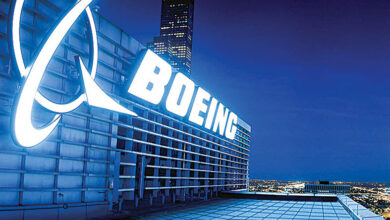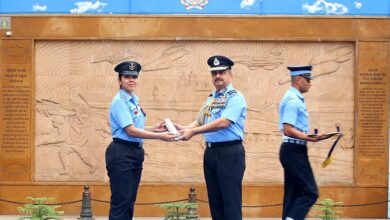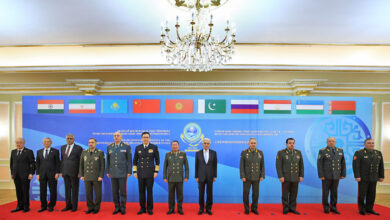India-US Relations and GE Fighter Aircraft Engines
By Air Marshal Anil Chopra
 New Delhi. Prime Minister Narendra Modi’s state visit to the US had very significant strategic undertones. Other than the ceremonials attached to a head-of-government’s visit, including a State dinner in the White House, the PM was honoured with an Address to the Joint Session of the Congress.
New Delhi. Prime Minister Narendra Modi’s state visit to the US had very significant strategic undertones. Other than the ceremonials attached to a head-of-government’s visit, including a State dinner in the White House, the PM was honoured with an Address to the Joint Session of the Congress.
Clearly President Joe Biden was laying the red-carpet to woo India and bring it closer in the West’s geo-strategic fold. The West needs the rising India, to counter China which is not only trying to challenge USA’s unipolar status, but is spitting fire and flexing muscles in the Indo-Pacific, against all its neighbour minus North Korea. The Ukraine conflict has also pitted the US and its allies against India’s traditional friend Russia, and Washington wants to wean it a little away.
Of immediate interest in the India-US matrix are the Defence Technology and Trade Initiative (DTTI) related deals. After years of back channel discussions, US offered to make the GE F414 engine through a joint venture with HAL in India with some 80 per cent Transfer of Technology (ToT). The very significant deal was signed during the Prime Minister’s visit. Spade work for the same had been done during US Defence Secretary Lloyd Austin recent visit to India.
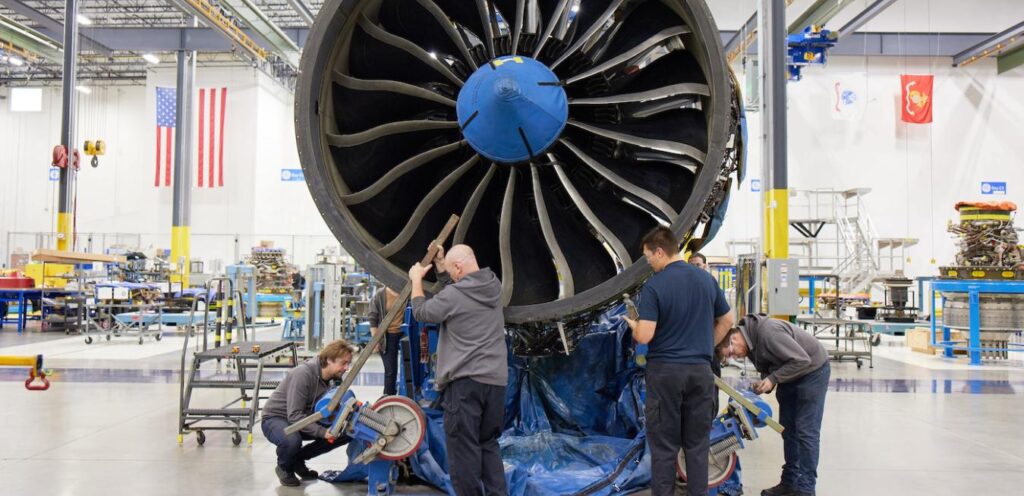
Geostrategic Indo-US Closeness
One policy objective of the US administration is to strengthen the capacity of the Indian military to play a key role in countering Chinese regional belligerence that has brought strategic congruence between India and USA. The two are well connected through QUAD. The US has supported India’s admission into multilateral export control regimes like Nuclear Suppliers Group (NSG), Missile Technology Control regime (MTCR), Wassenar Arrangement, and Australia Group.
US has been selling high-end military equipment to India since 2004 when Raytheon supplied the Weapon Locating Radars (WLRs) for the Indian Army. The two countries have signed logistics and communications compatibility agreements like LEMOA, COMCASA, and BECA that support inter-operability between their militaries. There are regular Summit and 2+2 Minister level meetings between them.
Indo-US Military Aviation Connect
Since 2008, USA has been the major supplier of airborne platforms to India. IAF acquired the Lockheed Martin C-130J-30 Super Hercules aircraft in 2008 for special operations, and the Indian Navy received the Boeing P-8I Poseidon Multi-Mission Aircraft, perhaps the most advanced in technology with Indian forces.
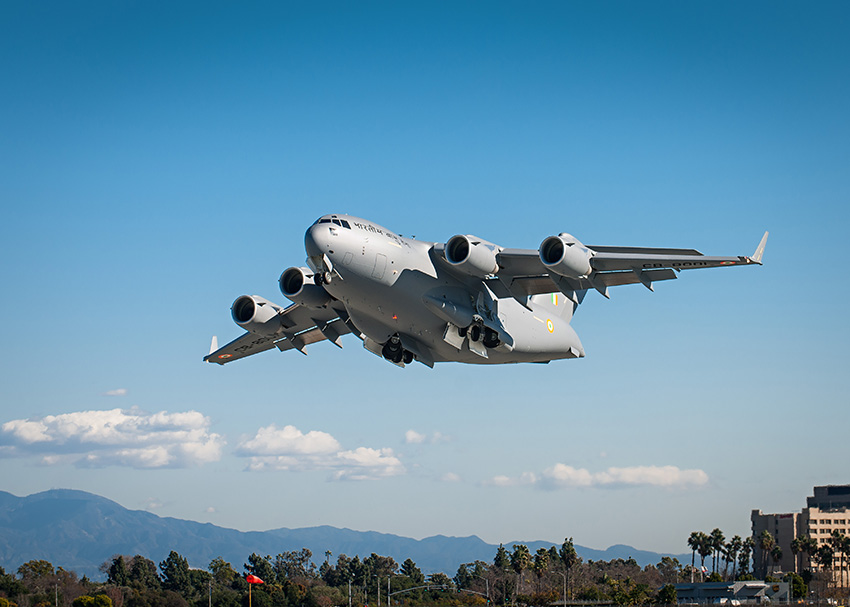 Boeing C-17 Globemaster III strategic airlift military transport aircraft
Boeing C-17 Globemaster III strategic airlift military transport aircraft
IAF inducted three specially equipped Boeing 737 Business Jet (BBJ), and two custom-built B 777 for VVIP duties. Boeing C-17 Globemaster III strategic airlift military transport aircraft, Boeing Apache Longbow AH-64E attack helicopters, and Boeing CH-47 D/F Chinook heavy-lift helicopters have all joined the IAF.
Boeing actually has the unique distinction of selling nearly all its systems sans the F 18 or F 15 fighter and the V 22 Osprey, thanks not only to the US Government support but also to the company’s own persistence in campaigns.
An Engine deal, even though meant for India’s own single engine Light Combat Aircraft (LCA), or the twin-engine Advanced medium Combat Aircraft (AMCA), should help put Boeing back in the fray for IAF’s fighter jet programmes.
Why the Aero-Engine is Important
An aircraft engine has the most complex technologies in an aircraft.
It has to operate very efficiently from the ground-level to very high-altitudes under changing atmospheric conditions. It has to operate from zero to supersonic speeds, and under high positive and negative ‘g’ conditions. Many engine components have to operate at high RPM and at very high temperatures. All this requires very special design and materials. A modern engine’s life could be a few thousand hours of operation – say plus minus 5000. Its serviceability has to be easy, like replacing one modular part with another to keep an aircraft in the air.
Notably, an engine costs nearly one-third of the total cost of the aircraft.
Limited Availability of Engine Technology
In view of the complexities, there are very few engine manufacturers in a few advanced countries. And they are unwilling to share their technologies, which in any case are controlled by their respective governments.
Even though the F 414 is a relatively old engine, sharing its technology with India required approval of the US Departments of State and Defense, and of course, the President of the US of A. Then, there has to be No Opposition to the State Department’s proposal from the US Congress.
Major Engine Manufacturers
The turbofan engine market is dominated by a handful of mostly western players. They manufacture both military and civil engines.
The top four aircraft turbofan engine manufacturers are Pratt & Whitney, Rolls Royce, GE Aviation, and Safran. GE and Safran of France have a joint venture, called CFM International for civil aircraft. Pratt & Whitney also has a joint venture, International Aero Engines, with Japanese Aero-engine Corporation and MTU Aero Engines of Germany.
Then, Pratt & Whitney and General Electric have a joint venture, Engine Alliance, selling a range of aircraft engines. Honeywell Aerospace makes smaller engines for executive jets and UAVs.
The Russians make mainly military engines and often depend on the West for commercial aircraft. Chinese companies have been reverse-engineering Russian engines and trying to develop their own through intellectual theft. They have still to succeed, and depend on Western engines for their airliners.
Indian DRDO’s GTX-35VS Kaveri Engine
India’s Gas Turbine Research Establishment (GTRE) is a Defence Public Sector Undertaking (DPSU). The GTX-35VS Kaveri is an afterburning turbofan project developed by GTRE.
The engine was originally meant to power the HAL Light Combat Aircraft (LCA) Tejas. However, the Kaveri programme failed to satisfy the necessary technical requirements and keep up with its envisaged timelines and was officially delinked from the Tejas programme in September 2008. A dry variant of the Kaveri engine is now being developed to power the DRDO Ghatak UCAV.
The Kaveri engine as developed is continuing in the meanwhile. India’s private firm Godrej & Boyce has won the contract to manufacture six more engines to carry out further tests. In February 2023, high-altitude tests of the engine were conducted successfully in Russia. GTRE is aiming to integrate Kaveri to DRDO Ghatak by 2026. Foreign help to take forward the Kaveri engine for fighter aircraft is still being considered, and will depend on how the evolution goes.
General Electric Engines
General Electric (GE) is a major aircraft engine manufacturer.
The GE engines include the CF6 on the Boeing 767, Boeing 747, and Airbus A330. The GE90 is on Boeing 777. The GenX was developed for the Boeing 747-8 and Boeing 787 Dreamliner, and proposed for the Airbus A350. The GE9X currently holds the title for the most powerful engine in the world. The engine features on the Boeing 777X.
GE engines also power many US military aircraft. The F110, is on-board the F-16, and the F404 and F414 engines on F-18 variants. F404 is also powers India’s LCA Tejas Mk1 and Mk1A. The F414 has been chosen for the LCA Mk2, and perhaps for initial Advanced Medium Combat Aircraft (AMCA). Nearly 60 F404-GE-IN20 engines were procured for LCA Mk-1 programme and around 99 more engines ordered for Mk 1A.
GE Aerospace has been growing its presence in India for four decades, leveraging joint ventures to gain market share.
Civil Aircraft
Air India placed a massive order for more than 800 GE LEAP engines. The highly fuel efficient and reliable LEAP (Leading Edge Aviation Propulsion) engines entered service in 2016. Over 2500 LEAP engine variants are flying. GE and India’s Tata group signed an agreement in 2017 to manufacture LEAP engine components in India for the global supply chain. The two companies had then also announced their intention to jointly pursue military engine and aircraft system opportunities for the Indian market.
Aero-Engine Technology Critical for India
Over the last few decades, India has mastered designing and building aero-structures for both fixed-wing and rotary-wing aircraft but needs much more forward movement. India is also manufacturing airborne radars, avionics and weapons.
However, the aero-engine is much more complex and, despite years of licensed production, and foreign engine overhauls, India has not been able to successfully design one of its own. The handful of manufacturers keep their cards very close to the chest and are unwilling to share technologies that they have acquired after years of research and investment. The only easy way to get these is through Joint Ventures.
The American offer, negotiated by respective National Security Advisers and approved at the President’s level, is thus highly significant.
American Aviation Presence in India
Boeing has been a pioneering and major player in India’s commercial aviation sector for ages, and Air India has recently announced a huge order for Boeing for which President Joe Biden has personally expressed thanks to India.
Boeing has been pushing for its F 18 Super Hornet fighter jet since the tender for 126 MMRCA (Medium Multi Role Combat Aircraft) was floated in 2007. Later the requirement for 57 aircraft for the Indian Navy also came up.
The MMRCA tender was scrapped due to complications and the MoD opted for 36 Rafales as an emergency measure from France for IAF. The fresh proposal for the IAF combat jet requirement is 114, now called Multi Role Fighter Aircraft (MRFA).
Notably, Rafale is also a shipboard fighter and used both by the French Air Force and Navy.
The transfer of F 414 engine technology to India will have huge implications for Boeing as while this engine basically powers the shipboard F 18 for the US Navy, it can also be used for an air force.
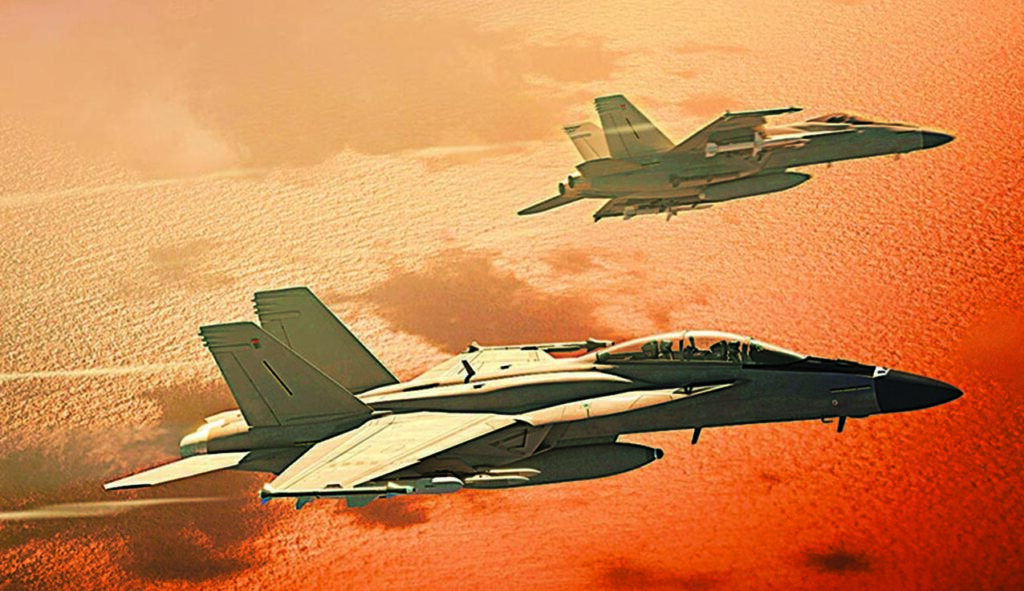 F 18 Super Hornet fighter jet
F 18 Super Hornet fighter jet
The then Boeing’s head for Defense and Space Chris Chadwick had said in 2012 in an interaction with India Strategic that despite the tail hook, for arrester wires on an aircraft carrier, the F 18 will be a formidable asset for IAF with hardly any change.
Perhaps Boeing will revive and intensify its India campaign for the F 18 Super Hornet again.
In fact, Boeing has been the most successful US company in India in selling military and civil aircraft, and has joint ventures with HAL and many private companies. It is sourcing aero-structures and sub-systems for many airborne platforms supplied to India and for global customers.
Notably, US Lockheed Martin’s F-21 is also a contender for India’s 114 fighter order. They too have JVs in India to make a large number of aero-structures and precision components for the C-130J airlifter and the S-92 helicopter for deliveries to customers around the world. Lockheed martin is supplying 24 Sikorsky multi-role MH-60R Seahawk maritime helicopters to the Indian Navy. The company is also engaged in supporting many Indian Start-Ups.
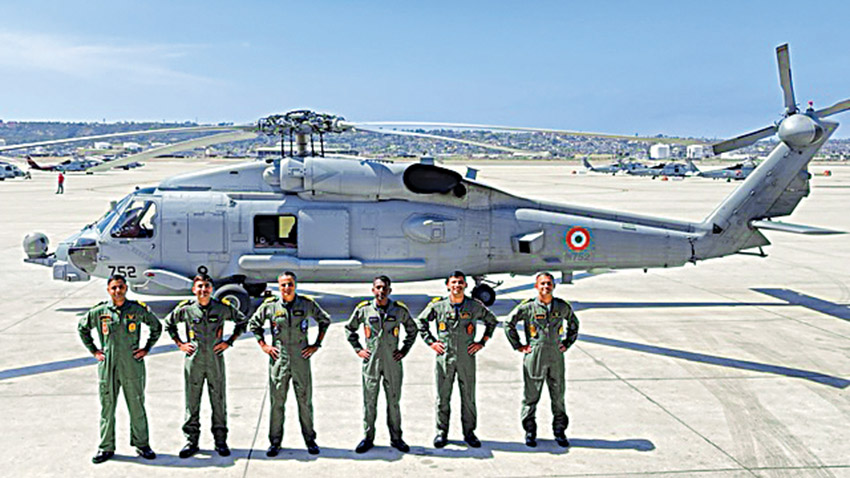 MH-60R
MH-60R
American Policy Level Support
India and USA are carrying out bilateral and multilateral military exercises with increasing frequency to improve interoperability.
The India US DTTI has helped push the engine deal, and is exploring new areas of technological development. United States has designated India as Strategic Trade Authorization-1 (STA-1) country that allows purchase of cutting-edge sensitive technologies from US companies. Appropriately, the major focus for the US-India Business Council (USIBC) is also on aerospace and defence.
The India-US Defence Policy Group (DPG) in Washington closely monitors defence cooperation, technology, trade, and military-to-military engagements under various working groups.
Way Ahead
With many single and twin engine aircraft on the horizon for acquisition, the selected engine’s reliability has to be very high, and it has to be very fuel efficient and for better range and endurance. In addition to the High Thrust-By-Engine Weight parameters, acquisition of newer and emerging technologies has to be kept in mind while doing Government-to-Government deals.
It would also be a good idea to get into the Maintenance, Repair and Overhaul (MRO) market by encouraging such tie-ups between foreign OEMs and India’s private sector entities.
(The author is Director General, Centre for Air Power Studies).



